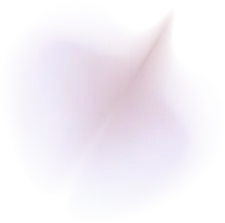Difficulty breathing during sleep, or sleep-disordered breathing (SDB), prevents restorative rest. Among SDB conditions, hypopnea causes frequent disruptive arousals and impaired sleep quality.
If left untreated, ongoing hypopnea escalates health risks of hypertension, stroke, and heart problems.
Thankfully, effective hypopnea management strategies bring relief. This guide explores proven and emerging hypopnea therapies.
In this guide, we’ll discuss treatment options from lifestyle modifications to CPAP therapy. With an integrative treatment plan, peaceful slumber free of airway obstruction awaits.
Understanding Hypopnea vs Sleep Apnea
While hypopnea falls under the umbrella of sleep-disordered breathing, key differences distinguish it from the more severe sleep apnea:
- Hypopnea is defined as an abnormal shallow breathing event lasting at least 10 seconds with 30% or greater drop in airflow. These episodes involve narrowed airways but not a complete blockage.
- Sleep apnea on the other hand involves complete pauses of breathing for 10+ seconds called apneas. Apnea is the more extreme end of airway collapse.
- Both conditions stem from airway muscles relaxing during sleep, causing obstruction. This differs from central apnea stemming from the brain’s impaired breathing regulation.
- Hypopnea and apnea events are tracked during sleep studies using sensors monitoring drops in respiratory airflow, effort, and oxygen levels.
- The term RERA, or respiratory effort-related arousal, is sometimes used interchangeably with hypopnea. Both indicate airway resistance without full closure.
Accurately diagnosing the type and severity of disordered breathing events is crucial for selecting appropriate therapeutic interventions. We’ll explore the gold-standard sleep study methods next.
Getting Diagnosed: Sleep Studies for Hypopnea
An overnight polysomnography (PSG) test at a sleep clinic is the best way to diagnose hypopnea. Home sleep apnea tests (HSAT) also detect hypopneas but with less accuracy. Here’s how it works:
During PSG or HSAT, your breathing is tracked using sensors such as:
- Nasal cannula – detects drops in airflow
- Chest and abdomen bands – track respiratory effort
- Pulse oximetry – monitors blood oxygen saturation
When you display shallow breathing for 10+ seconds together with a 30% drop in airflow and either arousal or oxygen desaturation, it’s scored as a hypopnea event.
The number of apneas plus hypopneas per hour determines your Apnea-Hypopnea Index (AHI), indicating SDB severity. An AHI of 5-15 is mild sleep apnea. 15-30 is moderate. An AHI above 30 is severe.
Interpreting your hypopnea-specific data along with apneas gives insight into the best treatment approaches. We’ll next explore both medical and lifestyle therapies.
Lifestyle Changes to Improve Hypopnea
While medical devices like CPAP are the gold standard, lifestyle adjustments also lessen hypopnea severity:
- Weight Loss – Reducing BMI alleviates neck tissue compression on the airway during sleep.
- Avoiding Alcohol and Sedatives – These substances relax muscles, worsening obstruction.
- Alternative Sleep Positions – Avoid supine sleeping which gravity causes the tongue/soft tissues to collapse backward.
- Humidifier – Hydrating dry airways lessens congestion and swelling.
- Nasal Dilators/Strips – Dilating nasal valves reduces airway resistance.
- Quitting smoking – Smoking worsens inflammation.
Consider a wedge pillow to sleep at an incline. This prevents the tongue from falling backward into the airway. Lifestyle approaches like these, when combined with primary medical therapies, provide a comprehensive hypopnea treatment plan.
Continuous Positive Airway Pressure (CPAP)
The most proven medical treatment for managing hypopnea (and sleep apnea) is continuous positive airway pressure or CPAP therapy. Here’s how it works:
A CPAP machine blows pressurized room air through a face mask you wear at night. This pneumatic splint action prevents upper airway tissues and the tongue from collapsing during sleep.
When a person with sleep apnea wears a CPAP mask, the machine generates a continuous flow of pressurized air. This air is delivered through a tube connected to the mask, which covers the person’s nose, mouth, or both. The air pressure acts as a gentle splint, keeping the airway open throughout the night.
The CPAP machine has a motor and a fan that work together to draw in ambient air. The air then passes through a filter to remove any impurities before it is pressurized. The level of air pressure is typically determined by a sleep specialist or healthcare professional based on the individual’s needs.
CPAP Mask
Moving on to the mask. It is specially designed to fit securely over the person’s nose, mouth, or both, creating a seal to prevent air leakage. The mask is connected to the CPAP machine via a flexible tube, allowing the pressurized air to flow directly into the airway.
When the person breathes in, the continuous positive airway pressure keeps the throat tissues and muscles from collapsing or blocking the air passage. This leaves the airway still open, guaranteeing a steady flow of oxygen and uninterrupted breathing during sleep.
CPAP treatment likely requires some adjustment and getting used to. The mask fit, air pressure level, and overall comfort can vary from person to person.
However, with proper guidance and support from healthcare professionals, many individuals find significant relief from sleep apnea symptoms and wake up feeling refreshed and energized.
Optimal CPAP Pressure
Optimal CPAP pressure is determined during your sleep study. Mild sleep apnea usually requires 6-10 cm of water pressure. Moderate cases need 10-15 cm. Severe apnea requires pressures above 15 cm.
For hypopnea, starting at 6 cm then increasing pressure treats residual events. Data from your CPAP machine helps refine the optimal pressure.
Newer Auto-CPAP devices automatically adjust pressure needs on a breath-by-breath basis. This technology works well for managing hypopneas.
While the gold standard, CPAP is not for everyone. Alternative therapies like oral appliances work for milder hypopnea. We’ll now explore those options.
NightLase®: Painless Procedure for Improved Breathing & Sleep Patterns
NightLase® is a non-invasive solution for better sleeping and breathing. Through its signature gentle-touch laser technique, NightLase® helps reduce common nuisances that disturb rest— snoring and sleep apnea.
With NightLase®, a renowned form of laser-activated tightening brings relief. Its refined Erbium: Yag light stimulates collagen contraction in delicate mouth tissues. Over multiple sessions, the soft palate and tongue gradually stiffen, quieting problematic sounds and easing airway obstruction.
Effortless for any qualified practitioner, rewarding outcomes come through a structured sequence. A brief series of three to five treatments across six to ten weeks primes the body’s natural response. Results then endure for extended periods of up to one year per cycle.
What really sets NightLase® apart is its worry-free nature. No surgery or anesthesia is required—just a painless pulse of light. Patients feel confident easing into restorative rest, left undisturbed by former disruptions.
Oral Appliance Therapy Options
Oral appliance therapy using a mandibular advancement device (MAD) is an alternative for mild sleep apnea and hypopnea. Here’s how MADs work:
These mouthpieces fit over the upper and lower teeth, similar to an athletic mouthguard. They hold the lower jaw slightly forward of its normal resting position.
This mandibular advancement helps maintain an open, unobstructed pharyngeal airway during sleep. Oral appliances avert the tongue and tissues from collapsing backward.
Patients undergo a custom fitting and incremental adjustment process supervised by a dentist or sleep doctor. Follow-up sleep tests assess effectiveness.
Success is lower compared to CPAP but oral devices provide an option for those intolerant to pressurized air. They are easy to travel with as well.
Downsides include custom Kosten, teeth discomfort, and jaw pain. But advances in oral appliance designs continue improving efficacy and comfort.
Other Emerging Hypopnea Treatments
Beyond lifestyle adjustments, CPAP and oral devices, additional novel therapies show promise for lessening hypopnea severity:
- Hypoglossal Nerve Stimulation – An implanted system electronically stimulates the tongue muscles, keeping the airway open.
- Palatal Implants – Plastic stiffening implants inserted into the soft palate prevent airway collapse.
- Nasal EPAP – Small resistive devices placed in the nostrils create positive pressure during inhalation.
While still in development, these innovative approaches offer alternatives for non-responders to existing treatments like CPAP. Exciting future options lie ahead.
Supplemental Oxygen for Hypopnea Events
Mild cases of sleep apnea and hypopnea may benefit from supplemental in-home oxygen therapy:
Low blood oxygen levels directly worsen sleep fragmentation and daytime symptoms. Correcting desaturation provides relief.
Oxygen is typically delivered through a nasal cannula at 1-3 liters per minute flow rate during sleep.
Benefits must be weighed against potential risks like hypercapnia in severe cases. Oxygen is usually combined with primary therapy.
Used alone, oxygen only treats the consequence of airway obstruction, not the root cause itself. Relying solely on oxygen risks enabling more apneas and hypopneas by relaxing respiratory drive.
For these reasons, oxygen primarily plays an adjunctive role in combination regimens when desaturation is significant.
Combination Therapy Approaches
No single solution for managing hypopnea fits all patients. Integrating therapies tailored to you maximizes results:
Mild sleep apnea often improves through combining conservative measures like positional therapy, weight loss, and oral appliances.
Moderate to severe cases usually call for CPAP plus supplemental oxygen if needed.
If CPAP remains intolerable despite troubleshooting, oral appliances or hypoglossal nerve stimulation offer alternatives.
Partner oral devices with nasal dilators or strips to optimize airway flow mechanics.
Record efficacy data to refine approaches. Be open to adjusting modalities based on your response.
In conclusion, significant advances in treating hypopnea offer new hope for uninterrupted, restorative sleep. Lifestyle modifications, CPAP, oral appliances, and emerging innovations provide proven relief.
Work closely with your sleep doctor to determine the optimal protocol for finally taming your hypopnea and restoring restful nights. Pleasant dreams ahead!






